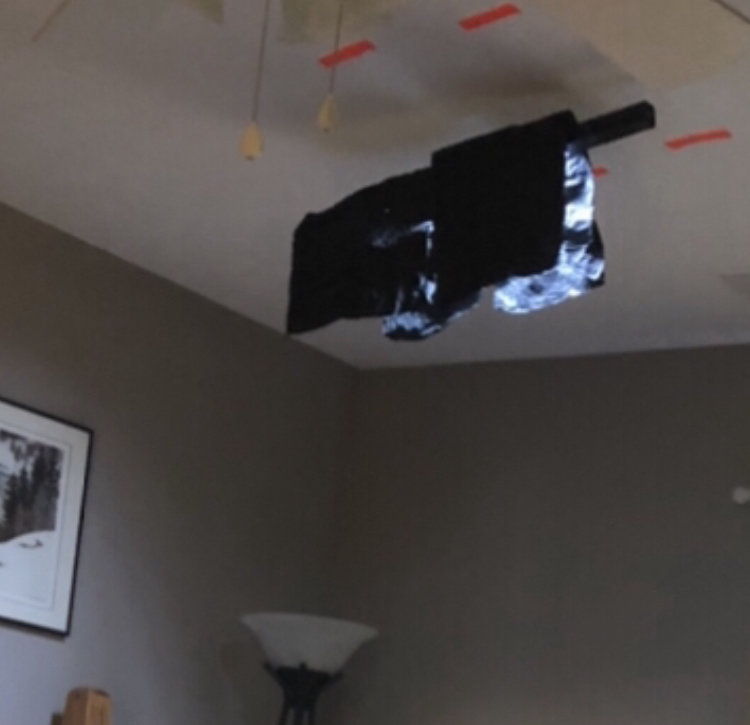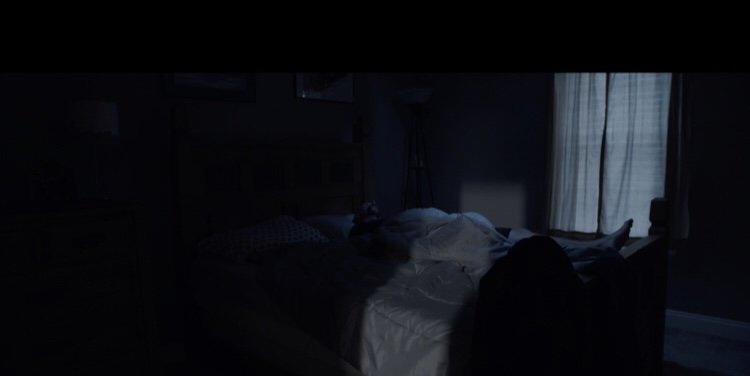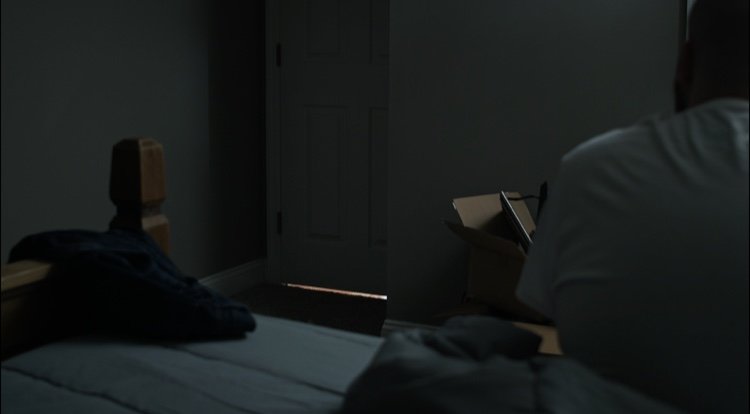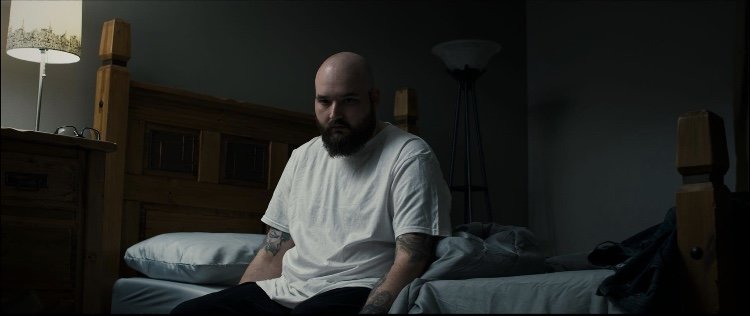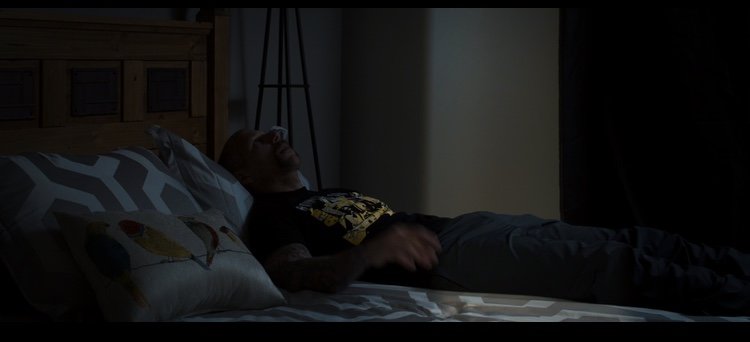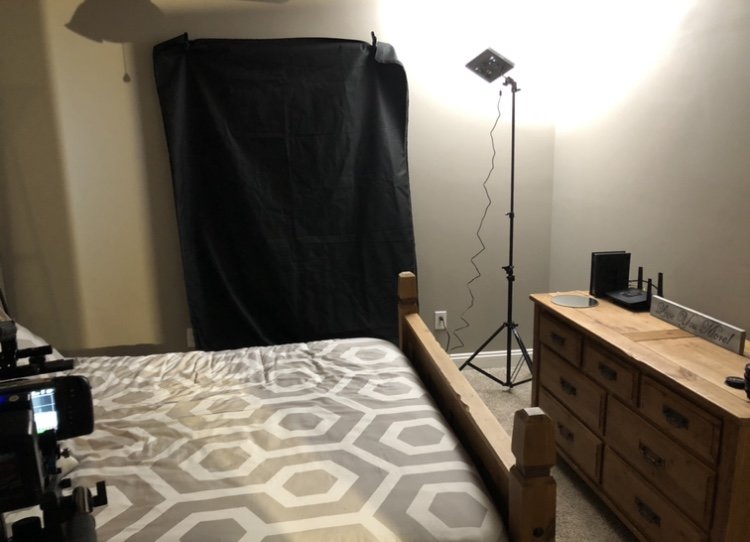
Justin Oakley
Basic Member-
Posts
147 -
Joined
-
Last visited
Everything posted by Justin Oakley
-
Interior bedroom—lighting
Justin Oakley replied to Justin Oakley's topic in Lighting for Film & Video
-
Interior bedroom—lighting
Justin Oakley replied to Justin Oakley's topic in Lighting for Film & Video
Hello again guys. sorry to kind of drag this thing out. So here’s what I’m working with. I’m thinking we may have to do this earlier in the day as it doesn’t get dark until around 8ish. ...The kid and whatnot. as mentioned before, I’m not a huge fan of the blue “moonlight” day for night stuff. But I’m not sure I have a choice. so I used the daylight through the window. I put a bunch of diffusion on the window outside (it could probably use more). I then cooled the temp in camera and used a full cto on the 120d ‘hallway light’. I did as Mr. Mullen suggested and flagged the light from the hallway using the doorway as a topper, since it’s kind of a tight spot and I couldn’t fit a flag in. I then used a handheld, dimmable, bi-color, tubular light and wrapped it with some cinefoil to focus it on the subject/bed. It was suspended overhead using a couple pieces of fishing line, taped to the ceiling with gaff tape. does this work or nah? Given what I have to work with. If so, I think I can bring the window down a bit in Resolve using some sort of mask. And I can probably lift the shadows up a smidge? I don’t know... -
Pulling wild focus
Justin Oakley replied to Justin Oakley's topic in Students, New Filmmakers, Film Schools and Programs
I just saw a brief clip of this focus puller rockin’ it on Instagram. This is just a snapshot but he’s moving around...really into it. what I noticed is that he’s not even looking at the tool (sorry, I’m not sure what the proper name for it is). I’ve only seen pictures of them, but from what I understand they have various distance marks and whatnot? He’s just whipping that thing back and forth, watching the monitor (and dancing along apparently). I think it was a music video. -
Interior bedroom—lighting
Justin Oakley replied to Justin Oakley's topic in Lighting for Film & Video
I just want to say thanks to you, and everybody here really. It’s cool that you’re even bothering to take the time to share your experience and methods with me...and my silly thread about lighting a small bedroom with my three cheap-ish lights. There’s no reason why you should feel obliged to even entertain such questions. But you do. And I appreciate that. -
Pulling wild focus
Justin Oakley replied to Justin Oakley's topic in Students, New Filmmakers, Film Schools and Programs
Gotcha. I guess I was getting wrapped around the axel about the idea of some improvised stuff. Kind of forgot about blocking and rehearsals and multiple takes and whatnot. -
Pulling wild focus
Justin Oakley replied to Justin Oakley's topic in Students, New Filmmakers, Film Schools and Programs
And what about with a really shallow depth of field? I guess that’s what I wonder the most. When it’s a game of inches is it ever just a guessing game? Again, for shots with a lot of energy. You’re watching the actor...the hips, etc. They bolt up, lean in, and bitchslap the other person across the table in like a second and a half. Then as soon as they got up, they’re back in their seat. You throw the wheel that fraction of a millimeter or whatever, and hope and pray they’re in focus? -
Interior bedroom—lighting
Justin Oakley replied to Justin Oakley's topic in Lighting for Film & Video
Damn. Thanks man! so I want to get a pretty good look like this...but 86 the practical and I’ll be content. -
Interior bedroom—lighting
Justin Oakley replied to Justin Oakley's topic in Lighting for Film & Video
In the shot of him sitting on the bed you can just baaaarely see the edge of the window. So I wonder if I can motivate a light from that general direction (without blasting the walls), elevate the camera height a bit and shoot the scene from there. Keeping the shaft of doorway light—cut like you said with a topper. Obviously the practical won’t be on. sorry. I know this is probably a basic setup but for some reason it’s the bane of my existence. Anything in a room with some practicals I’m sort of ok with figuring out. But this nighttime stuff is a real ball buster. I just see a lot of low budget stuff that involves creating this unrealistic blue atmosphere that is somehow supposed to emulate evening time. But he just looks overdone and fake as hell to me. -
Interior bedroom—lighting
Justin Oakley replied to Justin Oakley's topic in Lighting for Film & Video
I really like the idea of reversing the shot. Or the very first example you provided. It kind of sucks that it’s such a small room too. I understand that it’s important to have an “establishing” shot to keep the audience oriented. That’s where I’m kind of intimidated by how I’m going to make this work. Pretty much every example you gave I kind of smack my head because I’ve already filmed another sequence in the same room. And turning the set around might disorient (?). It’s not a super wide shot revealing a whole lot, but it gives a pretty good idea of the layout. this is a shot sequence with a reverse OTS showing the doorway in relation to the bed. He’s watching the boy’s shadow through the light leaking under the door...as he roams the halls at all hours of the night. -
Interior bedroom—lighting
Justin Oakley replied to Justin Oakley's topic in Lighting for Film & Video
I do have a fresnel. I don’t have a snoot, but could I maybe make one out of some cinefoil or something? I’ve got some of that. also, there still needs to be SOME light in the scene though, right? The viewer needs to at least see that he’s lying in a bed and not just suspended in darkness. Maybe not necessarily see a detailed picture on the wall, but that there is a picture on the wall. -
Interior bedroom—lighting
Justin Oakley replied to Justin Oakley's topic in Lighting for Film & Video
Ahhh, ok. I think I’m picking up what you’re putting down. So a topper on the hallway light to simulate the ceiling light being cut off by the top of the doorway. Instead of just shooting it straight through. And make it brighter. still flag the bounced light if possible moving in tighter for the close ups and meds isn’t as big a struggle as getting the wider master shot. That’s what’s really kicking my butt here. But the shot is kind of necessary as it will keep everything somewhat oriented. I also might try shooting light through the window. The reason why I was planning on shooting it during the day is mostly a scheduling thing. It gets dark a little later, and there’s a kid, and I don’t want to keep him up til all hours of the night. His dad is a buddy of mine and he’s been cool about letting me use his kid for this project...which is already a little messed up and weird. -
Interior bedroom—lighting
Justin Oakley replied to Justin Oakley's topic in Lighting for Film & Video
-
Interior bedroom—lighting
Justin Oakley replied to Justin Oakley's topic in Lighting for Film & Video
Awesome advice. Thanks so much for this. I’ve got a couple flags. I think the only other issue may be space. It’s not a massive room. By the time I sneak a stand and flags in, it will most likely decrease my “wide” shot. Also, that (warmer) light next to the window is the shaft of hallway light that I created with the 120d though. Should I still flag that you think? Or were you talking about the rest of the wall? -
Interior bedroom—lighting
Justin Oakley replied to Justin Oakley's topic in Lighting for Film & Video
Thanks guys. I did previously do some tests, but I can’t help but feel that I did it all wrong. It still looks...off. The scene is a father lying in bed while his son is knifing him in the chest. In this particular set up I stuck some black fabric over the window in our guest bedroom...since it was broad daylight. I warmed up the 120d and stuck it in the hallway, then I kind of flagged the light off a little bit with the door to create a shaft of light coming into the room. I initially decided to do this, not for stylistic reasons or the purpose of story, but to simply get more light on the scene. I then blasted the amaran into a corner of the room. since we’ll be shooting this during the day, I’m wondering if I should black out the window from the outside or crack the blinds a little bit and let the natural light leak in through the slats. Maybe cool the temp down in camera? I want it to look “natural”. And as someone mentioned here, I don’t “naturally” sleep with the curtains pulled back. And even if I do, there is almost never a lot of ambient light coming in...and it certainly isn’t blue. It still seems like there’s not enough light. Is it common practice to light it really well and bright, and then take it down in post? -
I know there are industry pros here, so I hope I’m not out of line. I’m just kind of throwing myself to the wolves because YouTube university only gets you so far. But I’m wondering if I could trouble you guys for some advice on lighting a “simple” interior. Theres one scene in particular that kind of intimidates me, which is probably pretty basic for a number of folks here. And that’s “int. Bedroom - night”. I’m trying to figure out how to do this for a short I wrote, and I’m currently making (kind of in a holding pattern due to COVID). I’m self-taught and self funded, so what I have essentially a small hodgepodge of lights: (1) Aputure 120DII, (1) dracast 2k fresnel—LED, (1) Aputure amaran, (1) Aputure MC. I also have some mods—flags, reflectors, muslin, etc. Using these lights, how would you set up a bedroom night scene? Like sleepy time night scene—no practical lamps or anything. Shoot one light through a window with 1/2 CTB? Bounce some light of a corner of the ceiling? Should I mess with the temp in camera? I just want to do it right and not be all lazy and ‘blue’ everything all to hell with day for night. As always, any insight is greatly appreciated. Thanks!
-
Pulling wild focus
Justin Oakley replied to Justin Oakley's topic in Students, New Filmmakers, Film Schools and Programs
Thanks for the feedback guys. I really appreciate it. I would’ve gone to the camera assistance section, but I didn’t want to post the question there. I’m self taught, and pretty new, so I wanted to kind of stay in my lane here. So my take away here is 1) It’s pretty much the norm (to the dismay of purists maybe?) to use monitors. Which I get. Either way, when the subject is moving it still seems like you’d be chasing focus—as I mentioned in the original post...handheld kinetic shots, aperture wide open, etc. where pre marked spots don’t really mean much when the dof is more shallow. 2) it’s ok if the focus isn’t tack sharp with every move. As long as it’s on point when they land. 3) 1917 was, in fact, a cinematic and technical masterpiece and the focus pullers have balls of steel. I couldn’t shut up about that movie for like a week. I watched it twice, pretty much back to back. I don’t care if critics call it gimmicky. -
When watching videos of focus-pullers/1st ACs work, a lot of the time their eyes are often not on any monitor. They are on the action—which is technically the “correct” way? (Taking measurements and whatnot). With a camera on sticks and pre-measured marks it’s simple enough I suppose. Guy stands here, talks to some other dude. He moves to his 2nd mark, and you get there with the focus. But where I get a little confused, and what I would like to get a glimpse into, is how they do this with more kinetic shots...lots of movement, handheld, some whipping around, etc. And especially with a wider aperture, where it’s not necessarily gauging a distance of one or two feet, but maybe inches. Even if they’re pulling using a monitor. Is there a groove or specific nuanced technique to this? Any good videos/tutorials/demos on this? YouTube only yields quick how-tos like measuring distance, marking the disk, and the ‘basics’. Also, somewhat related, I was shooting some stuff yesterday, operating and pulling focus (shouldered). I was at 2.8, I believe. And the subject was in the middle of a circle of people, preaching. As he moved and shifted around (not too animated but like one would if they were telling a really cool story) I could see the focus going a little soft here and there. So I would pull and sometimes over-throw it a tad...then back. I know a lot of it comes with experience and muscle memory, but I just want to see the actual method...if there is one. Thanks guys
-
Measuring stops
Justin Oakley replied to Justin Oakley's topic in Students, New Filmmakers, Film Schools and Programs
Wow, thanks for this! It’s cool that you took the time to respond with such a thorough explanation. Yes, ISO 1600...that’s what I meant. I think I understand most of what you wrote. That chart almost made sense but I got a little confused as to what information it was trying to convey. I shoot with the new pocket 4K from Blackmagic and recently started cranking away at a short I wrote. I filmed in Blackmagic RAW and I’m familiar with being able to change the iso and all that. This is my first time working with any flavor of RAW (I guess “technically” it’s not true RAW, but whatever. Another conversation that is out of my scope). I don’t have a light meter so I can’t really do what you had suggested...but I do get the gist. Again, I thought I kind of knew how stops worked. But I would see a camera test, or a test of the highlight recovery feature in Resolve for example, and there would be some remark like “I over exposed by 2 stops”...and I just kind of wondered how did he know exactly how many stops? Aside from the aperture ring on the lens I don’t really know how somebody would determine this. And of course, adding something like a variable ND filter like I use, I have NO idea how many stops up or down I am shooting at...as there are no markings or anything. Again, thanks for schooling me here. I’ve been trying to figure out how to form this question and you’ve helped me out a bit. -
Measuring stops
Justin Oakley replied to Justin Oakley's topic in Students, New Filmmakers, Film Schools and Programs
Actually, it doesn’t. Not completely anyway. The halves, whole, and thirds columns represent stops of light? So if I’m shooting shutter: 1/30 - Fstop: 16 - ISO: 3200...that image is “properly” exposed? And if one wants to overexposed one stop, they either change shutter to 1/15, fstop to 11, or ISO to 3200? -
I’m sure this is probably a novice question, but I’m asking anyway. So when talking about exposure there are multiple factors to take into account—aperture, shutter, ISO, any other accessories you may be using, etc. I think I have an ok grasp of WHAT stops are. But I’m still a little confused as to how people know how many stops up or down they are shooting at? Like how do they quantify it? For example when they say “I brought it down three stops” are they referring to the marks on the aperture ring? Or are they just really good at “feeling” it or what? What if you’re changing the exposure of a shot without messing with the aperture? Like using a variable ND filter, for instance. “I under exposed the shot by like 3 1/2 stops using the variable ND”. I hope this question makes sense
-
Yeah... I know. I figured it was a long shot. I just had one question. This is the only place I come to, filmmaking wise. Aside from various Facebook groups of course.
-
Can we post or discuss questions regarding acting and other misc regarding film and television? I just had a (hopefully) quick question but I don’t want to get booted.
-
Anybody with commercial experience?
Justin Oakley replied to Justin Oakley's topic in General Discussion
It does! Thanks a lot! -
Hello, I am shooting a 32nd commercial for a friend of mine who owns a business. His secretary sent me the requirements and submission information for the TV station. I have two questions 1) what is a “slate”, in the context of commercial submission? I know what a slate is, and I have one...the kind most filmmakers are familiar with. But I’m pretty sure this a different kind of slate. On the form I have it says the slate must include name, ISCI code, and length. I’m just wondering what they are looking for exactly. Do I just create something like a title with this information and stick it before the two seconds of black at the beginning of the commercial? Is “slate” just another name for a title page? 2) I looked up ISCI code (because I had no idea what it was), and from what I understand this is something that I would create personally…a unique, alphanumerical identifier for the commercial. In my Google search, I saw it described as having four letters and four numbers. But the example provided in the email was just 5 numbers. If anybody has personal experience with this, a little insight would be GREATLY appreciated. Thanks guys!
-
Do you use their color tools as well or just the stock conversion?


